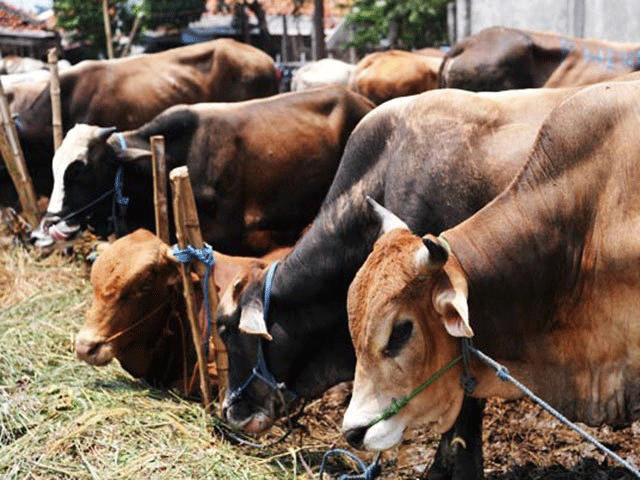Vaccine shortage stalls beef export
Meat trade encounters complex challenges due to inadequate inoculation of cattle

With infectious ailments like the fog fever, lumpy skin disease and foot and mouth disease afflicting cattle throughout the province, the quality of red meat sold across Lahore has become increasingly dubious with the passage of time however, while the local consumers might have been inured to the substandard animal protein on their plates, earning the approbation of international export partners is no easy feat.
Although the demand for red meat produced in Pakistan is pretty high especially in blooming economies like China, the high prevalence of the foot and mouth disease among local livestock alongside a shortage of the relevant vaccine has raised concerns among foreign stakeholders, who are sceptical about purchasing meat and other animal based products made in Pakistan, thereby reducing their exports to a great extent.
The foot and mouth disease or FMD, which is a fairly common ailment afflicting cattle including buffaloes and cows, infects the skin between the animal's mouth and hooves, causing blisters to form on the tongue, palate, and gums. These blisters not only cause the sick animal to develop a high fever but they also disrupt the feeding patterns and reduce milk production.
According to Dr Muhammad Iqbal Shahid, Chief Veterinary Officer and Director General (Extension) of the Department of Livestock and Dairy Development Punjab, viruses like the pestedespetits ruminants (PPR), Newcastle disease (ND) and the foot and mouth disease (FMD) have caused the most harm to cattle in the country but their incidence could not be controlled due to a lack of health resources like vaccines.
"The department currently requires 110 million doses of the vaccine against foot-and-mouth disease, while only 9 million doses are imported, and 9 million doses are being produced locally. We are facing a shortage of approximately 92 million doses. Furthermore, even though the population of cattle is increasing by 6 per cent each year, there are only 2400 veterinary doctors to take care of the health of animals. In other words, only one doctor and two paravets are available for examining 20,000 animals," disclosed Dr Shahid.
Concurring with Dr Shahid on the importance of monitoring the health of livestock, Dr Manouchhar, a zoologist elucidated that there are two types of diseases commonly spread among animals.
"There are those which only affect animals while others like the foot and mouth disease, can be transmitted to humans," informed Dr Manouchhar.
Naseem Ahmad Saifi, Chairman of the Standing Committee on Halal Food Import and Export and the All Pakistan Meat Processors and Export Association, revealed that only one FMD free zone was present in Punjab's Bahawalpur for reviewing the health status of livestock, while another disease-free compartment had been created with the support of China in Sheikhupura.
"Even though there are no barriers in exporting meat to the Gulf countries, China, which is our target market, only accepts FMD free meat. In order to im-
prove our access to the Chinese market, we must control FMD and improve our animal identification process. Otherwise, FMD is a major obstacle in the export of meat to countries which have a big market for Pakistani buffalo's frozen meat." explained Dr Saifi. Dr Saifi's assertion is supported by sources from Livestock Punjab, which reveal that meat worth 500 million dollars is exported from Pakistan, out of which 60 per cent of the revenue is generated from production in Punjab's provincial capital, Lahore. Furthermore, boiled meat worth 20 million dollars has been exported to China during the last two are months, and these figures expected to reach 60 million dollars by the end of the next financial year.
Published in The Express Tribune, March 24th, 2024.



















COMMENTS
Comments are moderated and generally will be posted if they are on-topic and not abusive.
For more information, please see our Comments FAQ